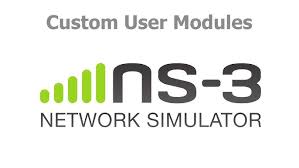Modern organizations—including schools, municipalities, and small-to-medium enterprises (SMEs)—face increasing pressure to maintain robust, scalable, and secure IT infrastructure. Effective Network Management ensures that IT resources are used efficiently, securely, and reliably. This paper explores comprehensive network management using open source tools such as Nagios and OpenNMS, integrated with NS-3 simulations for system design validation and planning.
Comprehensive White Paper: Modern Network and Enterprise Cybersecurity Management for Schools and Municipalities with NS-3 Simulation and Strategic Operations Integration
Executive Summary
In today’s digital era, schools, municipalities, and public sector institutions face complex challenges in delivering reliable, secure, and cost-effective network services. This white paper presents a holistic framework combining modern network monitoring tools like Nagios and OpenNMS, discrete-event network simulation with NS-3, and enterprise cybersecurity best practices. It integrates operations management, Lean Six Sigma, financial and procurement strategies, and workforce development through CompTIA certifications. Strategic partnerships with keencomputer.com and ias-research.com enable accelerated deployment, risk management, and professional training, ensuring resilient and future-ready IT ecosystems.
1. Introduction
As digital learning, e-governance, and IoT deployments expand, schools and municipalities must ensure networks that are performant, secure, and scalable. Concurrently, escalating cyber threats demand integrated enterprise cybersecurity alongside network management. This white paper offers a comprehensive approach, integrating open-source monitoring, simulation-based validation, structured operational and financial frameworks, and certified professional development. Partnerships with keencomputer.com and ias-research.com provide expert guidance and tailored solutions to meet these evolving needs.
2. Modern Network Management Tools
2.1 Nagios
- Real-time monitoring of uptime, service availability, and system health.
- Modular plugin architecture enabling customized alerting and reporting.
- Integration with third-party platforms (Slack, Jira) for incident escalation.
2.2 OpenNMS
- Enterprise-grade fault, performance, and traffic flow monitoring.
- Automated network discovery with topology visualization.
- Service level monitoring and KPI dashboards.
3. Enterprise Cybersecurity Integration
3.1 Cybersecurity Imperatives
Schools and municipalities face increasing cyber threats including ransomware, phishing, and insider attacks. Enterprise cybersecurity integration ensures protection of critical assets, data privacy, and service continuity.
3.2 Core Cybersecurity Measures
- Zero Trust Architecture (ZTA): Strict identity/device verification.
- Endpoint Detection and Response (EDR): Continuous threat monitoring.
- Network Segmentation: Containment of security incidents.
- Patch Management: Timely updates to mitigate vulnerabilities.
- Incident Response Planning: Preparedness through simulation.
- Security Information and Event Management (SIEM): Centralized threat analysis.
3.3 Cybersecurity Monitoring Integration
- Extend Nagios/OpenNMS with security plugins for alerting suspicious activities.
- Use NS-3 to simulate cyber attack scenarios and test defense postures.
4. Network Simulation with NS-3
4.1 NS-3 Overview
- Discrete-event network simulator for academic and industrial research.
- Models wireless/wired networks, routing, and protocol behaviors.
- Supports IPv4/IPv6, traffic modeling, and performance/stress testing.
4.2 System Design and Security Validation
- Simulate WAN/LAN configurations under normal and attack conditions.
- Benchmark device performance (routers, switches, firewalls) under load.
- Model cyber threats such as DDoS and evaluate mitigation effectiveness.
4.3 Procurement Evaluation
- Generate data-driven benchmarks to support vendor-neutral equipment selection.
- Reduce procurement risk by validating designs before purchase.
5. Strategic Frameworks for Sustainable IT Operations
5.1 Operations Management
- SLA-driven network and security monitoring.
- Centralized dashboards with incident ticketing and workflow automation.
- Continuous process tuning informed by real-time analytics.
5.2 Lean Six Sigma
- DMAIC methodology applied to network latency, fault resolution, and security incidents.
- Root Cause Analysis (RCA) for persistent issues.
- Data-driven continuous improvement cycles.
5.3 Financial Management
- Total Cost of Ownership (TCO) analysis incorporating CapEx, OpEx, training, and incident costs.
- Budget forecasting and ROI justification based on simulation and operational data.
- Cost optimization leveraging open-source technologies.
5.4 Procurement Management
- Develop RFPs grounded in NS-3 simulation outputs.
- Incorporate security and compliance criteria.
- Vendor risk assessment including supply chain security.
6. Workforce Development and Certifications
6.1 CompTIA Certifications
- Network+: Networking fundamentals and troubleshooting.
- Security+: Core cybersecurity skills and risk management.
- Server+: Data center infrastructure and virtualization.
- Linux+: Managing Linux-based open-source monitoring tools.
- CySA+: Behavioral analytics and security operations.
- PenTest+: Penetration testing and vulnerability management.
7. Roles of keencomputer.com and ias-research.com
keencomputer.com
- Custom deployment and integration of Nagios, OpenNMS, and other open-source tools.
- Workflow automation and Lean Six Sigma consulting to optimize operations.
- Staff training aligned with CompTIA certifications.
- Cybersecurity architecture design and incident response support.
ias-research.com
- NS-3 simulation development for network and cybersecurity scenario testing.
- Advanced risk analytics and regulatory compliance consulting.
- Procurement strategy consulting backed by data-driven insights.
- Lean Six Sigma process integration advisory.
8. Recommendations for Implementation
- Conduct pilot NS-3 simulations to evaluate current and projected network and security needs.
- Deploy Nagios and OpenNMS incrementally to establish real-time monitoring and alerting.
- Upskill IT staff via CompTIA certifications supported by keencomputer.com training programs.
- Apply Lean Six Sigma DMAIC cycles to operational workflows for continual improvement.
- Align procurement processes with validated simulation results and comprehensive financial planning, leveraging ias-research.com expertise.
9. Conclusion
Combining network monitoring, cybersecurity integration, and simulation-driven validation creates resilient, efficient, and secure IT infrastructures for schools and municipalities. This approach, underpinned by operations management, Lean Six Sigma, and workforce professionalization, helps institutions navigate evolving technological and threat landscapes. Strategic partnerships with keencomputer.com and ias-research.com provide the expertise and tools necessary for sustainable digital transformation.
References
- Hunt, C. (2020). Network Management: Principles and Practice. Pearson.
- Nagios. (2024). https://www.nagios.org
- OpenNMS. (2024). https://www.opennms.org
- NS-3 Project. (2024). https://www.nsnam.org
- Stevenson, W. J. (2020). Operations Management. McGraw-Hill Education.
- George, M. (2002). Lean Six Sigma: Combining Six Sigma Quality with Lean Speed. McGraw-Hill.
- Horngren, C. T., Datar, S. M., & Rajan, M. V. (2014). Cost Accounting: A Managerial Emphasis. Pearson.
- Heizer, J., Render, B., & Munson, C. (2020). Operations Management. Pearson.
- CompTIA. (2024). https://www.comptia.org
- PMI (2017). A Guide to the Project Management Body of Knowledge (PMBOK® Guide). Project Management Institute.
- GSA (2025). Zero Trust Architecture Buyer’s Guide. https://www.gsa.gov
